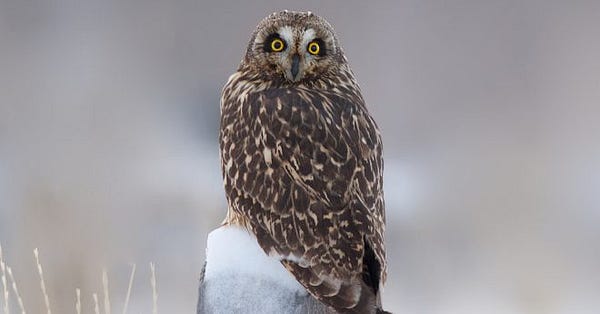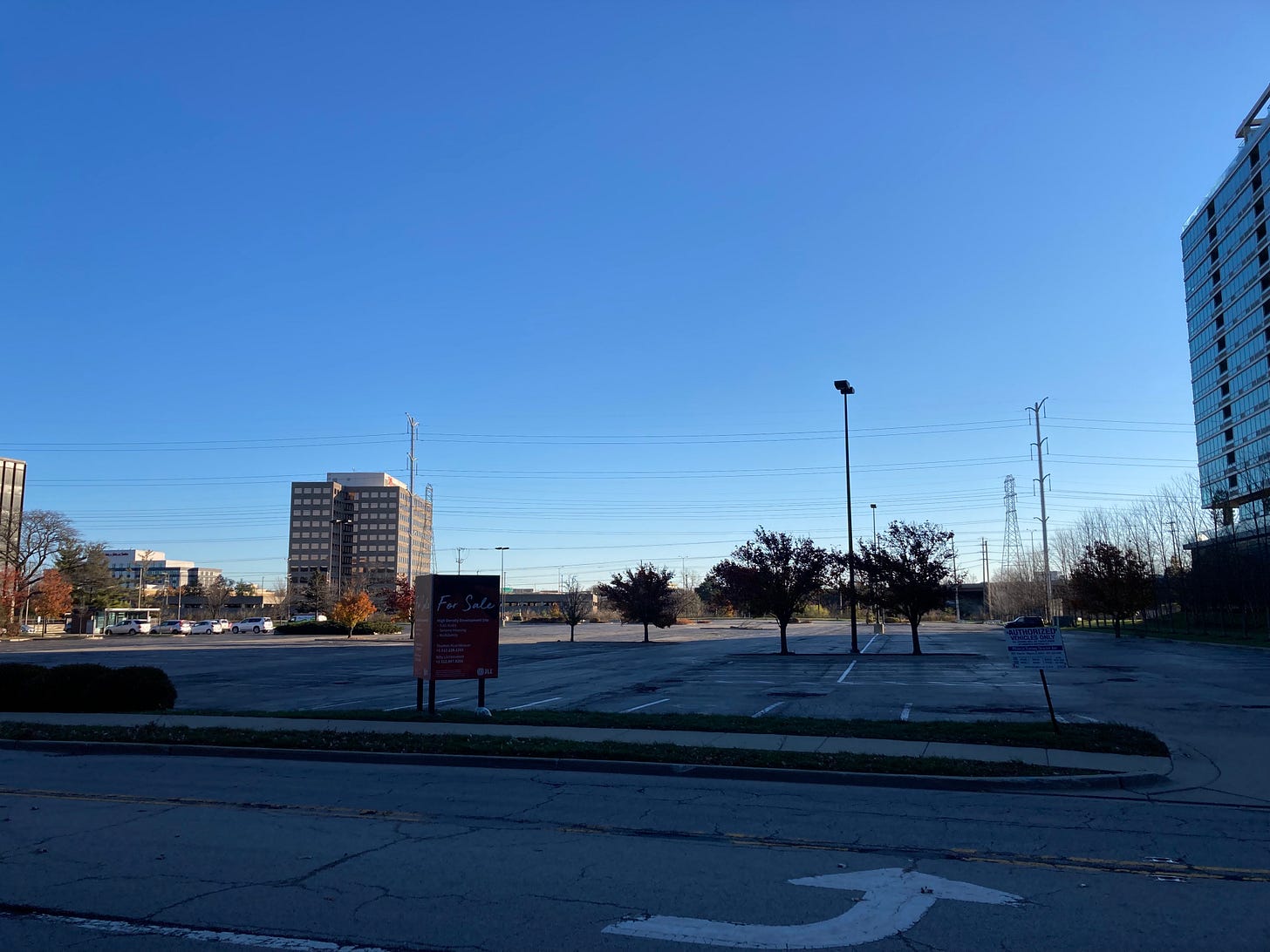Carvana tower poses threat to migrating birds
Potential location for 135-foot tall glass structure in Skokie is across the street from state nature preserve.
A car vending machine is the kind of idea that sounds as if it was hatched during a business school group project. You can just imagine the pitch:
We’re going to make the car-buying experience frictionless. We’re going to transform the car-buying experience by selling cars online and disrupt the industry.
Carvana is a car dealer that is selling cars from a glass tower, a sort of vertical car lot, that also acts as a vending machine. In fact, they’re doing it in 24 locations nationally, including one nearby in Oak Brook. The only thing is, though, an all-glass, brightly lit 13-story car vending machine poses a bit of a problem environmentally. Just how do you build these things in a way that doesn’t harm birds?
I write a lot about the 3 Billion Birds Gone study that was released in October 2019. That’s because it’s longitudinal data that shows how many birds have been lost since the 1970s—and what we can do to bring them back. After habitat loss and degradation, scientists cite collisions with glass as one of the key drivers of bird population loss, along with cats, pesticides and climate change. Unfortunately, Chicago has become known for building collisions, as its brilliant skyline sits right on an ancient flyway along Lake Michigan.
The skyline is not going to go away any time soon, but there are simple solutions that will mitigate some of the harm to birds. These include installing fritted, or patterned glass, and reducing nighttime illumination. These are measures that can be taken with commercial and residential structures alike.
Now back to the proposed Carvana location in Skokie, right next to the Edens Expressway and Harms Woods, a state nature preserve across the street. This latter-day car kabob will present a danger to the thousands of birds that utilize the green spaces of the North Suburbs during migration and year-round. Birds are likely to see through the glass Carvana structure and think they can fly through it. When I visited Harms Woods last week, I realized it had a lot in common with the forest preserves I frequent nearby: rare flatwoods with a range of resident species like Northern Cardinals and Blue Jays, but also the potential for hundreds if not thousands of migrating sparrows, warblers and wrens. There’s a vital flyway that extends from Chicago to Glencoe along the North Branch of the Chicago River to Skokie Lagoons and the Chicago Botanic Garden.
“It has the potential to do enormous damage,” said Robert Kusel said of the tower. Kusel’s a Skokie resident who’s shared his concerns with the Village of Skokie as part of the dialog about Carvana.
The Skokie Plan Commission approved the project earlier this month with the catch that Carvana include bird-safety considerations regarding glass and lights, as well as other details pertaining to the parking lot and traffic. The Chair of the Plan Commission indicated that those inclusions, including the bird-safety components, would be detailed in “side language.” The precise process for developing that language remains unclear.
Kusel first read about the planned Carvana project in a Village Board meeting report. Knowing the potential harm to birds, he began reaching out to birding organizations and village leaders. Annette Prince of Chicago Bird Collision Monitors testified at the November Plan Commission meeting. Prince calculated the Bird Collision Threat Factor using a formula from the U.S. Green Buildings Council. A factor below 20 is optimal for a glass building; the Carvana with standard glass produced a whopping 58. With bird-friendly glass, the figure dropped to 17.
The project may go before the Village Board of Trustees for a vote as soon as Monday, Dec. 6. You may submit your comments regarding the project to the Board at publiccomments@skokie.org and please cc Chicago Bird Collision Monitors at info@birdmonitors.net.
South American species pays visit to Waukegan
A likely Small-billed Elaenia, thousands of miles north of its typical haunts in South America, wowed many in Waukegan over the weekend. It’s especially interesting because Illinois also was home to the first recorded U.S. sighting of an elaenia, at Douglass Park in 2012. The bird’s been seen near the Municipal Beach, at the water treatment plant. There’s a full report from Sheryl DeVore here.
Sandhill Cranes pour into region
One of the great Chicagoland birding phenomena is the fall migration of Sandhill Cranes from their breeding grounds to the north. Many of us have been fortunate to have a moment lately when we hear the distant calls of cranes as the kettle high, high above the earth, even right over our city streets (that was the case for me two weekends ago in West Ridge). Others have counted massive movements of cranes, and not just Sandhills either. There have been a few globally rare Whooping Cranes mixed in, too, including views from places like LaBagh Woods on the Northwest Side.
While a bit late this year, the numbers from crane hotspot Jasper-Pulaski State Wildlife Area in Indiana have been astounding. Here’s how the figures went just before Thanksgiving:
Nov. 18: 4,452
Nov. 23: 28,652
A significant percentage of the eastern crane population spends fall and portions of winter at the site about an hour south of Chicago. All the more important to stymie a proposal to hunt Sandhill Cranes in Wisconsin.
I’ve added the above video of Sandhills taken by my friend Mitchell Wenkus at Jasper-Pulaski last fall. Because I never tire of seeing and hearing this video!
TWiB Notes


Birdwatching has the above piece on wintering owls, including a reminder of etiquette to follow when observing them……This week’s episode of “This American Life” was titled the “Spark Bird” and devoted to all things birds. The best part may have been host Ira Glass birding with superstar Noah Strycker who shares his “spark” story about Turkey Vultures…..Up North Voice has a piece wrapping up the 2021 Kirtland’s Warbler census in northern Michigan. Kirtland’s Warblers were recently taken off the federal endangered species list after years of conservation work to restore their tiny population…..Northeastern Illinois birder Beau Schaefer rode gravel bikes more than 6,000 miles in 2020 while completing a Big Year and identifying 276 species. He now has written a book about the experience available on Amazon.
This is a reader-supported newsletter. Both free and paid subscriptions are available. The best way to join the community and support my work is by taking out a paid subscription. Anyone who becomes a paid subscriber will receive the above This Week in Birding sticker in the mail!




